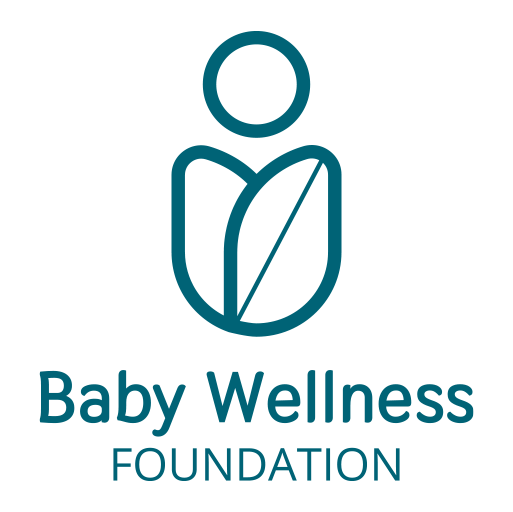Approfondimenti scientifici
Care and protection of the nail apparatus in the neonatal period
Nails are a peculiar characteristic of primates, closely related to evolutionary functions such as the protection of phalanges, stabilization of grip, and support for fine motor skills. They therefore play an important role in both object manipulation and walking.
From an embryological point of view, nails begin to form between the 9th and 13th week of gestation, as derivatives of the ectoderm, the same germ layer that gives rise to the epidermis and skin appendages. The nail matrix, located under the nail root, is responsible for the proliferation of keratinocyte cells that compose the nail plate.

At birth, nails are already present and can be surprisingly long. Their initial consistency is softer than that of the adult but gradually hardens with growth, following a process of keratinization that reflects the structural maturation of the nail and its mechanical function.
Fingernails and toenails grow constantly. Fingernails tend to follow the curvature of the fingertip, while toenails develop with a straighter margin. In the neonatal period, these structures are particularly delicate and prone to minor trauma or breakage due to relative hypomineralization and reduced cohesion among nail plate cells.
Neonatal nail management
Optimal timing
The best time to trim nails is right after the bath or, alternatively, after briefly soaking them in warm water, since they become softer and easier to shape. This is due to the temporary moisturizing effect on the nail, which increases the plasticity of the corneal plate, making it less prone to microfractures.
Another option is to proceed during sleep, when the musculature is relaxed and the risk of sudden movements is reduced. Nail trimming in a newborn also has a neuro-proprioceptive value, as it helps maintain adequate tactile feedback without creating pressure points or irritation.
Recommended tools
For trimming, the use of rounded-tip scissors is recommended, as they help prevent accidental injuries. It is essential not to cut the nails too deeply, either on the hands or feet, to prevent the risk of onychocryptosis (ingrown nails), a condition that in newborns can cause painful inflammation and alterations in plantar support.
For smoothing the edges, the use of soft cardboard files, preferably disposable, is recommended, as they guarantee a delicate, controlled, and safe abrasive action. Unlike metal files, which can be too aggressive for the still soft nail structure of the newborn, cardboard files reduce the risk of weakening the nail plate and limit bacterial buildup.
Technique for fingernails
Fingernails grow following the curvature of the fingertip. It is advisable to respect this natural line, avoiding cuts that are too deep, which could expose the nail bed.
In the neonatal period, self-contact of the hands with the face or mouth is frequent, behavior linked to primitive motor schemes such as the sucking reflex, oral orientation, and the first attempts at sensory self-regulation. These gestures, in addition to representing a stage of body exploration, promote integration among the tactile, proprioceptive, and oral systems, contributing to the development of body awareness and affective-relational skills.
Technique for toenails
Toenails should be trimmed leaving a straight margin with intact corners, to promote correct growth and preserve digital and metatarsal alignment. It is important not to cut them excessively short: it is recommended to leave 1–2 mm of free edge, thus maintaining the protective function of the digital extremity and reducing the risk of ingrown nails.
Prevenzione delle complicanze
The presence of sharp nail edges or pointed corners can expose the newborn to scratch-related microtrauma, especially on the face, eyelids, or oral mucosa. In children particularly sensitive to tactile stimuli or in phases of increased oral reactivity, poorly smoothed nails can induce compensatory behaviors such as finger biting or, more rarely, early forms of onychophagia.
In the presence of dry, retracted, or thickened cuticles, it may be useful to apply emollients and moisturizers specific for neonatal skin (creams containing panthenol, vegetable glycerin, or calendula oil), provided they are dermatologically tested and free of aggressive perfumes or preservatives. These products play a fundamental role in maintaining periungual skin homeostasis, preserving the integrity of the nail matrix microenvironment, and preventing the formation of microfissures that may serve as entry points for bacteria and microorganisms.
Special care must be taken not to forcibly remove the cuticles, as they represent a natural anatomical barrier between the external environment and the nail matrix. Their removal can indeed increase susceptibility to local infections (bacterial or fungal paronychia) and alter the delicate processes of keratinization and nail regeneration.
Trimming newborn nails therefore requires attention, precision, and knowledge of the anatomical and physiological characteristics of the immature nail apparatus. An inappropriate intervention can expose the newborn to microtrauma, periungual infections, onychocryptosis, and sensory discomfort.
Nail care in the newborn is not a simple hygienic gesture, but a practice that integrates evolutionary, sensory, and biomechanical considerations. Understanding the origin and functions of nail structures, as well as the safest intervention methods, allows prevention of complications, promotion of the child’s sensory well-being, and support for the beginning of a positive body relationship from the very first months of life.
Danby, S. G., Bedwell, C., & Cork, M. J. (2020). Neonatal skin care and toxicology. In L. F. Eichenfield, I. J. Frieden, E. F. Mathes, & A. L. Zaenglein (Eds.), Neonatal and Infant Dermatology (3ª ed., cap. 5). Philadelphia: Elsevier.
Mount Sinai Health System+2healthfinder.fl.gov+2MedlinePlus+2
Kaneshiro, N. K., Dugdale, D. C., & ADAM Editorial Team. (2023). Nail care for newborns. FloridaHealthFinder Health Encyclopedia.
Mount Sinai Health System+2healthfinder.fl.gov+2MedlinePlus+2
Hirsch, L. (2022). Trimming Your Baby’s Nails. Nemours KidsHealth, med review.
Reddit+4Salute dei Bambini+4Salute dei Bambini+4
Children’s Nebraska (2022, rev. 2022). Trimming your baby’s nails (Parents’ guide).
Overseas Doctor (2024). How to safely trim your baby’s nails: Complete Guide. Overseas Doctor
Baptist Health (2021, Feb 20). 7 Tips for Newborn Nail Care.
Hello Pediatrics (2024). Newborn Fingernail Care: filing vs trimming.
Mount Sinai (2023). Nail care for newborns. Reviewed clinically.
HealthFinder (2023 review). Nail care for newborns: keeping nails clean and trimmed.
